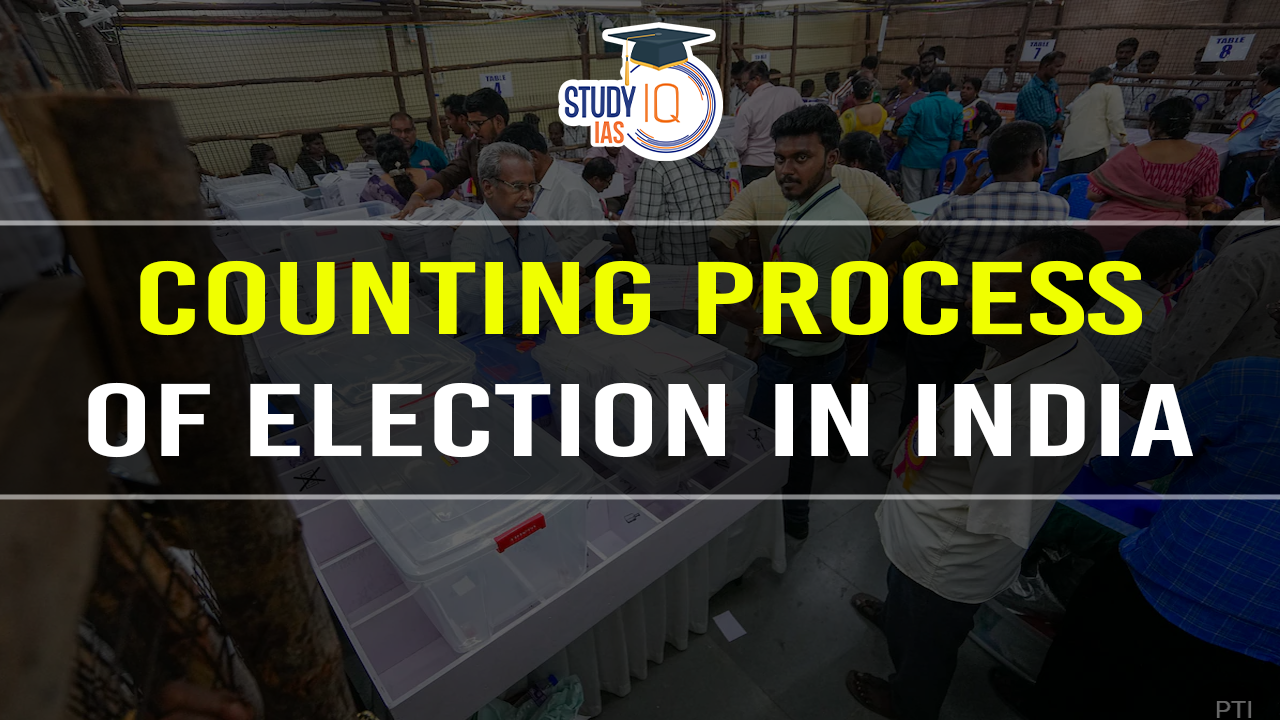Table of Contents
India, the world’s largest democracy, conducts elections with a meticulous and transparent process to ensure the integrity and accuracy of the electoral outcomes. The counting of votes, a crucial phase in this process, is governed by stringent guidelines laid out by the Election Commission of India (ECI). This article provides a comprehensive overview of the vote counting process in Indian elections, detailing the roles of key officials, the technology used, and the step-by-step procedure followed to declare the results.
Key Roles and Responsibilities of Officers
Returning Officer (RO)
The Returning Officer (RO) plays a central role in the election process within a constituency. Key responsibilities include:
- Conducting the election in the constituency.
- Overseeing the counting of votes.
- Ensuring compliance with ECI guidelines.
The RO is typically an officer of the government or a local authority, appointed by the ECI in consultation with the state government.
Assistant Returning Officer (ARO)
In larger constituencies with multiple assembly segments, Assistant Returning Officers (AROs) assist the RO by supervising the counting process at different locations. AROs operate under the direct supervision of the RO to ensure uniformity and adherence to guidelines.
Lok Sabha Election Result 2024 Live Update
Counting Process of Election in India: Location
The ECI and the RO determine the date, time, and place for counting votes. Ideally, the counting process for a constituency occurs at a single location, usually the RO’s headquarters. However, in constituencies with several assembly segments, counting may take place at multiple locations, each managed by an ARO.
Layout of the Counting Hall
The counting of votes for each assembly segment of a parliamentary constituency is performed in a single hall. The layout and setup of the counting hall are designed to ensure efficiency and transparency:
- Tables and Rounds: Each round of counting involves 14 Electronic Voting Machines (EVMs). In cases where both parliamentary and assembly elections occur simultaneously (e.g., in Odisha), the first seven tables are used for counting assembly election votes, while the remaining tables are used for parliamentary election votes.
- Space Management: If the number of candidates is large, additional halls or tables can be set up with the prior permission of the ECI. Each hall handles the counting for only one assembly segment at a time to prevent overcrowding and ensure smooth operations.
Counting Process of Election in India
Personnel and Security
The counting process is conducted by counting supervisors and staff, appointed through a three-stage randomization process to ensure impartiality. Candidates and their agents are allowed to be present in the counting hall to maintain transparency and trust in the process.
Sequence of Counting
- Postal Ballots: Counting begins with the Electronically Transmitted Postal Ballots (ETPB) and Postal Ballots (PB). This step is conducted under the direct supervision of the RO.
- EVM Votes: Thirty minutes after the commencement of PB counting, the counting of votes from EVMs begins. This can proceed even if the PB counting is still ongoing.
- Results Declaration: Results from each round of counting, involving 14 EVMs, are declared sequentially. This process continues until all votes from all EVMs are counted.
VVPAT Verification
Voter Verified Paper Audit Trail (VVPAT)
To enhance transparency and voter confidence, the VVPAT system, which generates a paper slip for each vote cast, is used. The Supreme Court mandates that VVPAT slips from five randomly selected polling stations per assembly segment be matched with the corresponding EVM results.
Random Selection and Verification Process
- Random Selection: The ECI prescribes the process for randomly selecting one EVM from each assembly segment for VVPAT matching.
- Verification Booth: The verification of VVPAT paper slips is conducted inside a secured VVPAT Counting Booth within the counting hall. Only authorized personnel are allowed access.
- Sequential Counting: The VVPAT slips of five randomly selected polling stations for each assembly segment are matched sequentially. This process requires the personal supervision of the RO or ARO.
Discrepancy Handling
If a discrepancy arises between the VVPAT slip counts and the EVM results, the printed VVPAT slip count is considered final. The ECI has not specified further actions if discrepancies are found in one of the five VVPAT counts, but the immediate action is to consider the VVPAT count as the authoritative result.
Conclusion
The counting of votes in Indian elections is a detailed and transparent process designed to uphold the democratic principles of fairness and accuracy. Through the diligent efforts of the RO and ARO, along with the use of advanced technologies like EVMs and VVPATs, the ECI ensures that the election results reflect the true will of the people. This robust system not only enhances the credibility of the electoral process but also strengthens the democratic framework of the nation.
| Other Important Articles | |
| Odisha Assembly Election Result 2024 | Andhra Pradesh Assembly Election Result 2024 |
| Sikkim Assembly Election Result 2024 | Arunachal Pradesh Assembly Election Result 2024 |


 National Technology Readiness Assessment...
National Technology Readiness Assessment...
 Justice Mission-2025: China’s Live-Fir...
Justice Mission-2025: China’s Live-Fir...
 Suryastra: First Made-in-India Long-Rang...
Suryastra: First Made-in-India Long-Rang...

























